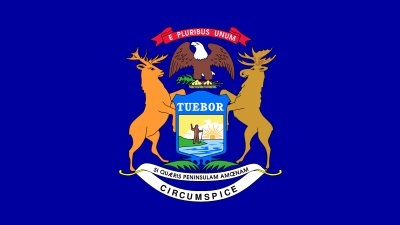The Deadly Storm That Shattered Central America And Exposed Global Disasters’ Dark Truth
Hurricane Fifi–Orlene, one of the most deadly storms in Central America’s history, unleashed havoc in September 1974, striking with devastating force. This Category 4 hurricane primarily ravaged Honduras, but also affected parts of Belize, Guatemala, and El Salvador. The scale of destruction caused by Fifi–Orlene was immense, leaving widespread devastation, from torrential flooding and landslides to the destruction of crucial infrastructure. Despite the immense human cost, the storm is often overlooked in the annals of disaster history, overshadowed by other global tragedies of that era.
What made Fifi–Orlene so deadly was its unexpected intensity and rapid escalation. The storm’s sudden intensification left little time for the people in its path to prepare. With over 8,000 people killed and thousands more displaced, the destruction was profound. The impact on communities was lasting, with survivors facing years of struggle to recover. Many parts of the affected region still feel the ripple effects today, underscoring that the true costs of the hurricane are not fully understood.
Hurricane Fifi–Orlene: A Catastrophe That Took the World by Surprise
Fifi–Orlene was not the largest hurricane in history, but its deadly power was undeniable. Rapidly intensifying in the Caribbean, it caught many off guard. Lacking adequate warnings, countries like Honduras, Belize, and Guatemala were left vulnerable as the storm approached. The lack of preparation for such a sudden and violent event contributed to the extreme loss of life and destruction. Unlike other storms, Fifi–Orlene seemed to appear almost out of nowhere, with little time for authorities to act.
What followed was devastating: torrential rain, severe flooding, and winds that uprooted entire communities. The storm’s quick escalation left little opportunity for evacuation or preparation, and the consequences were far-reaching. In the end, Fifi–Orlene demonstrated how easily communities could be overwhelmed by a natural disaster, and the importance of disaster planning and early warning systems.
The Heartbreaking Consequences of Hurricane Fifi–Orlene: The Death Toll and Destruction
- More than 8,000 fatalities
The final death toll of Hurricane Fifi–Orlene reached over 8,000, with many lives lost to flooding, landslides, and collapsing infrastructure. The rapid rise in floodwaters left communities with little time to react, causing widespread panic and trapping thousands in the storm’s wake. The severity of the destruction was overwhelming, and many were unable to escape as the waters rose higher. - Over 100,000 displaced individuals
The storm displaced more than 100,000 people, with entire villages washed away by floodwaters. Many survivors found themselves homeless, relying on emergency shelters that were often overcrowded and lacking in essential supplies. The destruction of homes, farms, and livelihoods meant that recovery for many families would be a long and difficult process, with some still struggling to rebuild even years later. - Severe damage to infrastructure
One of the most significant consequences of Fifi–Orlene was the destruction of infrastructure, particularly roads, bridges, and communication lines. This damage severely hampered efforts to deliver aid to affected areas and complicated evacuation and rescue operations. The lack of proper infrastructure meant that many regions were isolated for extended periods, further delaying recovery and prolonging suffering for those in need.
Honduras: The Nation Devastated by Hurricane Fifi–Orlene’s Fury
Honduras, the hardest-hit country, saw its landscape drastically altered by the force of Fifi–Orlene. Entire communities were submerged as the floodwaters rose rapidly, and critical infrastructure was destroyed, with roads, bridges, and buildings washed away. The storm wiped out essential services, leaving many areas without access to food, clean water, or medical care for weeks.
The storm revealed how unprepared the country was for such an event, as well as the lack of resources for an effective disaster response. Honduras was left to rely heavily on international aid, but recovery was slow. The agricultural sector, which was vital to the economy, also suffered significant losses, further impeding recovery efforts. The scars left by Fifi–Orlene would last for decades, and many regions are still feeling the consequences today.
The Political Missteps in Responding to Hurricane Fifi–Orlene’s Devastation
In the aftermath of Hurricane Fifi–Orlene, there was widespread criticism of the political response. As the storm strengthened, there were few measures in place to alert the public to the growing danger. Inadequate warning systems and lack of effective communication left citizens in the storm’s path vulnerable and unprepared. The absence of clear guidance from government officials led to chaos, and the toll of the storm was worsened by the lack of coordinated emergency efforts.
Moreover, the slow pace of relief efforts was a key issue. Aid distribution was delayed due to the widespread damage to infrastructure, and rescue teams faced significant challenges in reaching affected areas. The failure to act swiftly in the initial stages of the disaster raised questions about the preparedness of the government and highlighted flaws in the country’s disaster management systems.
Fifi–Orlene: A Disaster That Was Overlooked by the World
Though the impact of Hurricane Fifi–Orlene was devastating, the storm’s global significance was largely ignored at the time. With the international media focusing on other major disasters, the tragedy of Fifi–Orlene did not receive the attention it deserved. The lack of coverage meant that the storm’s victims did not receive the support they needed in the immediate aftermath.
In Central America, the storm’s full extent was not realised until years later, and even then, the international community did not fully grasp the level of destruction. The absence of prompt global assistance delayed the recovery process, and local communities were left to rebuild on their own. Fifi–Orlene’s underreported aftermath demonstrated the need for greater global awareness and response to natural disasters.
The Critical Failings in Disaster Management Exposed by Fifi–Orlene
- Inadequate early warning systems
One of the biggest weaknesses exposed by Hurricane Fifi–Orlene was the absence of reliable early warning systems. Without proper alerts, many people were caught unprepared and unable to evacuate in time. Better communication could have saved countless lives, and this failure highlighted the need for improved forecasting and warning systems. - Lack of evacuation plans
The storm’s rapid escalation made evacuation almost impossible for many affected areas. The absence of efficient evacuation plans meant that large numbers of people were unable to flee the storm in time. The failure to organise orderly evacuations added to the disaster’s toll, leading to greater loss of life and more injuries. - Weak disaster response infrastructure
The slow and inadequate disaster response in the wake of Fifi–Orlene illustrated the weakness of the region’s disaster management systems. While international aid did eventually arrive, logistical challenges made distribution difficult, and the relief effort was hampered by damaged infrastructure. This delay in aid intensified the suffering of survivors and hindered recovery efforts.
The Long-lasting Effects of Hurricane Fifi–Orlene: Who’s Paying the Price?
Even today, the impact of Hurricane Fifi–Orlene is still being felt, particularly in the most devastated regions of Honduras. For many communities, the long-term effects have been far-reaching, as they continue to deal with the damage to their homes, livelihoods, and infrastructure. Some areas still struggle with the aftermath, and the environmental destruction caused by the storm has left lasting scars.
The psychological toll on survivors has also been immense, with many still coping with the trauma of such a devastating loss. The storm’s legacy continues to affect not only the physical landscape but also the social and economic fabric of the region. Rebuilding efforts have taken decades, and the recovery process is far from complete in many areas.
Fifi–Orlene: A Grim Reminder of Nature’s Unstoppable Power
Hurricane Fifi–Orlene’s devastation serves as a stark reminder of the uncontrollable power of nature. Despite advances in technology and forecasting, we cannot prevent such powerful storms from forming. What we can do, however, is improve preparedness, speed up response times, and invest in better infrastructure. The lessons learned from Fifi–Orlene should continue to shape disaster planning worldwide.
The storm’s force demonstrated how vital it is to respect nature and prepare for the worst-case scenario. We may not be able to stop hurricanes, but we can certainly minimise their impact by ensuring that communities are prepared and resilient in the face of such disasters.
Conclusion: What Have We Learned from Hurricane Fifi–Orlene?
The tragedy of Hurricane Fifi–Orlene has proven to be a lesson in disaster preparedness and the importance of rapid response. The storm’s destructive power exposed critical weaknesses in early warning systems, evacuation plans, and disaster response infrastructure. These lessons are vital for future planning, as we continue to face natural disasters of increasing severity.
The hurricane’s legacy remains a sobering reminder of the need for constant vigilance and improved disaster management. While there has been progress since 1974, Fifi–Orlene underscores the importance of being better prepared for the unexpected.
5 Short FAQs:
- How many people died in Hurricane Fifi–Orlene?
The storm claimed over 8,000 lives, with thousands more injured and displaced by the disaster. - What was the impact of Hurricane Fifi–Orlene on Honduras?
Honduras was severely affected, with many communities submerged and essential infrastructure destroyed. - What made Fifi–Orlene so deadly?
The hurricane’s rapid intensification, heavy rainfall, and widespread flooding led to immense devastation. - Was international aid provided after Fifi–Orlene?
*Yes, though delayed, international aid eventually arrived, helping with recovery efforts in
References:
Hurricane Fifi–Orlene
Hurricane Fifi (1974) Relief Efforts in Honduras
1974 – Hurricane Fifi
DISASTERS: A Hurricane in Honduras




